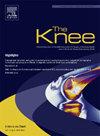Clinical outcomes of repaired radial meniscal tears: A retrospective study with minimum 2-year follow-up
IF 1.6
4区 医学
Q3 ORTHOPEDICS
引用次数: 0
Abstract
Background
The management of meniscal radial tears has changed significantly in recent years in favor of meniscus repair. However, there is still limited published data on the outcomes and risk factors associated with repair failure. The objective of this study is to evaluate the clinical success rate of repaired meniscal radial tears and identify potential risk factors for failure.
Methods
Patients who underwent repair of meniscal radial tears between 2016 and 2022 were reviewed retrospectively. The following parameters were collected: demographic data, pre-operative Kellgren-Lawrence grading, history of previous knee surgeries, time from injury to surgery, injury location, number of sutures used, use of transtibial tunnel augmentation, associated procedures, postoperative functional scores, and clinical failure rates.
Results
81 patients were included, with a mean age of 29.9 ± 12.3 years. The mean follow-up time was 36.7 ± 17.0 months. Postoperatively, the mean IKDC was 81 ± 18.1, and the mean Lysholm score was 82 ± 18.4. The clinical failure rate was 19.8%. In the univariate analysis, the factors associated with failure included increased age, female gender, medial meniscus repair, isolated repairs (without ACL reconstruction), a Kellgren-Lawrence scale greater than 0, and repairs without a transtibial tunnel. However, none of these variables were statistically significant in the multivariate analysis adjusted for age and gender.
Conclusion
The clinical success rate of repaired meniscal radial tears was about 80% after a minimum 2-year follow-up. Increased age, female gender, repair of medial meniscus, isolated repair without ACL reconstruction, mild preoperative osteoarthritic signs, and repair without a transtibial tunnel augmentation are possible risk factors for failure.
Level of evidence
Level IV, retrospective case series.
求助全文
约1分钟内获得全文
求助全文
来源期刊

Knee
医学-外科
CiteScore
3.80
自引率
5.30%
发文量
171
审稿时长
6 months
期刊介绍:
The Knee is an international journal publishing studies on the clinical treatment and fundamental biomechanical characteristics of this joint. The aim of the journal is to provide a vehicle relevant to surgeons, biomedical engineers, imaging specialists, materials scientists, rehabilitation personnel and all those with an interest in the knee.
The topics covered include, but are not limited to:
• Anatomy, physiology, morphology and biochemistry;
• Biomechanical studies;
• Advances in the development of prosthetic, orthotic and augmentation devices;
• Imaging and diagnostic techniques;
• Pathology;
• Trauma;
• Surgery;
• Rehabilitation.
 求助内容:
求助内容: 应助结果提醒方式:
应助结果提醒方式:


